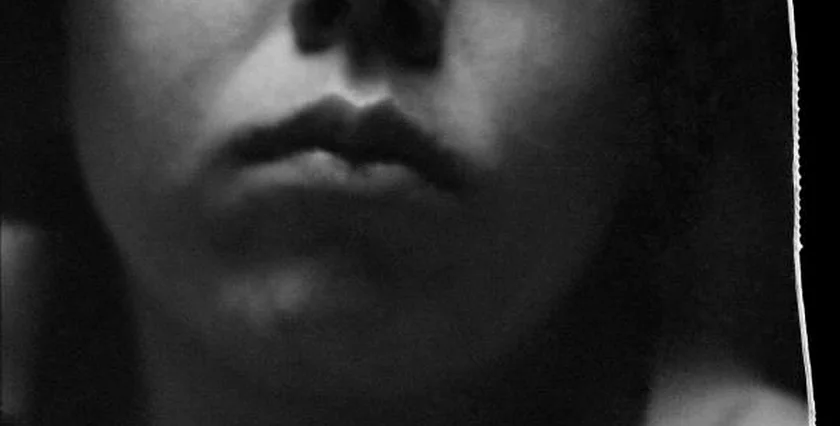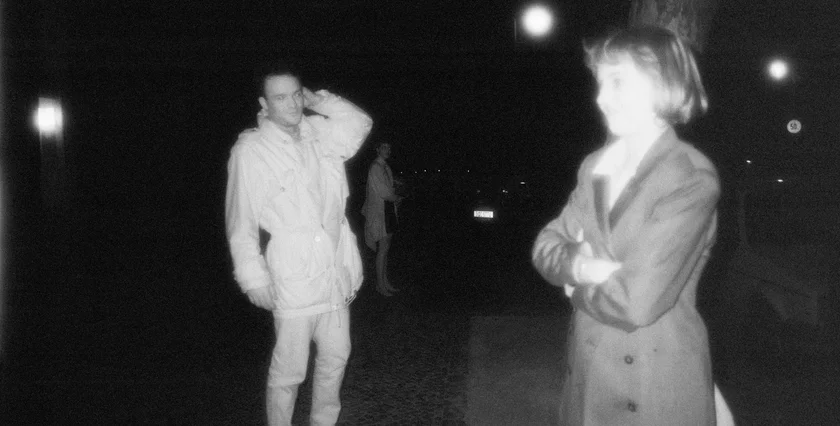Libuše Jarcovjáková started taking pictures as a teenager, and when Soviet tanks entered Prague in the summer of 1968, she had her camera in hand.
More than half a century later, following a career that took her from the clandestine LGBT scene of communist Czechoslovakia to the bustling streets of Tokyo, and from the lonely nights of West Berlin back to post-Velvet Revolution Prague, the now 72-year-old photographer is getting a crowning retrospective at the Trade Fair Palace building of the National Gallery Prague (NGP).
In addition to the NGP exhibition, a new feature-length documentary, I’m Not Everything I Want to Be (Ještě nejsem, kým chci být), directed by Klára Tasovská, also provides an unflinching look at Jarcovjáková’s life and work, using thousands of photographs and diary entries narrated by the artist herself.
A Czech photographer finally gets her due
The piece de resistance of the NGP’s autumn season, which opened to the public at the end of September, the exhibit showcases some 500 photographs of an artist who remained little-known until just a few years ago, after a notable breakthrough at the renowned international photography festival held in the French southern city of Arles.
Featuring 50-odd years of photographic experimentation from an artist intent on documenting life with unadulterated honesty and in its most naked immediacy, the unique exhibition combines some of Jarcovjáková’s most famous cycles with lesser-known, newer artworks.
“It was important for [curator] Lucie [Černá] and myself to present not only older, iconic photographs, for example, from T-Club and other important photographic cycles, but also my current work,” the artist said. “I want to present myself as a current artist. I’m not dead yet.”
With consistent empathy for the marginalized and the downtrodden, Jarcovjáková became better known for her work documenting the lives of minorities—including the Roma, Vietnamese, and Cuban immigrants in communist Czechoslovakia—as well as for her photographic cycle taking the wild pulse of the LGBT nightlife scene in Prague, most notably in the T-Club “Téčko,” one of the two hotspots of Prague’s gay community at the time.
It was important for me not to focus only on the very famous cycles from the 70s and 80s in Czechia but also to give space to the sets from Japan and Berlin and to self-portraits, which I consider pivotal in Libuše’s work,” said Lucie Černá, curator of the exhibition.
In Tokyo, where she found unexpected success as a fashion photographer, to West Berlin, where she moved in the mid-1980s with few resources or contacts, Jarcovjáková continued using photography as a medium to explore feelings of loneliness, alienation, and culture shocks – themes that permeate her entire work – but also seek out unexpected instances of camaraderie and sexual intimacy, islands of companionship, love and, ultimately, of personal freedom.
In a league with Nan Goldin, Diane Arbus
Self-portraits, from her tentative beginnings as an amateur photographer to her later years as an artist with a distinct visual language, are also front and center in the exhibition, a way for the artist to investigative her own sense of self and body and formulate her dreams and hopes beyond the failures, disappointments and doubts lurking behind every corner.
“I’ve been through it all. Of course, I’ve had downs. I’m not sure why, but I always chose – rather obsessively – the most difficult path and created obstacles for myself,” she said in an interview with Deník N.
Featuring both black-and-white and color pictures, both analog and digital, the unique display of Jarcovjáková’s works at the NGP – which aren’t presented in a strictly chronological way – also allows viewers to experiment and connect with the photographs in their way, reflecting the artist’s view of the creative medium.
People tend to “intellectualize photography unnecessarily,” Jarcovjáková commented. “They feel that there must be something more to it all, something they haven’t understood, something they’ve missed. They don’t understand that they either connect with the picture or they don’t. I don’t need to be able to explain how a photo touches me. It’s about what happens inside me the first split second”.
“In collaboration with architect Anna Matoušková, I have created a space that invites viewers to discover individual works freely while also perceiving their visual and thematic context”, confirms curator Lucie Černá.
Unapologetically raw and gentle, Jarcovjáková’s work goes well beyond merely providing a documentary account of her surroundings across eras and borders, as enlightening as those records might be. It is also an honest exploration of one’s feelings of self-worth and self-perception and questions the role the visual medium can play in restricting our freedom or, on a more hopeful note, safeguarding it from our inner and outer demons.
Libuše Jarcovjáková runs from Sept. 27–March 30, 2025, at Trade Fair Palace, Tuesday–Sunday from 10 a.m.–6 p.m. English-language guided tours take place on Nov. 16 and Feb. 12. I’m Not Everything I Want to Be is currently playing at Kino Aero and Kino Světozor with English subtitles. Those buying a ticket for the Libuše Jarcovjáková exhibition are entitled to a discount for the movie, and vice versa.
Autumn 2024 exhibitions at the National Gallery Prague
- 1924-1974-2024: Prague Fair Palace A small exhibit on the history of the Trade Fair Palace, now the seat of the National Gallery Prague’s modern and contemporary art collection, on its 100th anniversary. From Sept. 27 to March 30, 2025.
- Jiří Kolář – Voilà la femme Collages by Jiří Kolář from the 1960s and 1970s on the occasion of the Czech artist and poet’s 110th birthday. From Sept. 27 to Jan. 26, 2025.
- Salome: Femme Fatale of Symbolism and Decadence Exploration of biblical Jewish princess Salome in French art and its spread in the Czech lands. From Sept. 27 to Jan. 12, 2025.
- The Fairy Tale Illustrations of Hanuš Schwaiger Collection of works by Czech artist Schwaiger (1854-1912), who incorporated fairytales into his dreamy and unsettling artistic universe. From Sept. 27 to Jan. 12, 2025.
- École de Paris: Artists from Bohemia and Interwar Paris Czech-born artists who found success and inspiration in interwar Paris. From Nov. 8 to March 2, 2025, at the Waldstein Riding School.












 Reading time: 5 minutes
Reading time: 5 minutes 



























